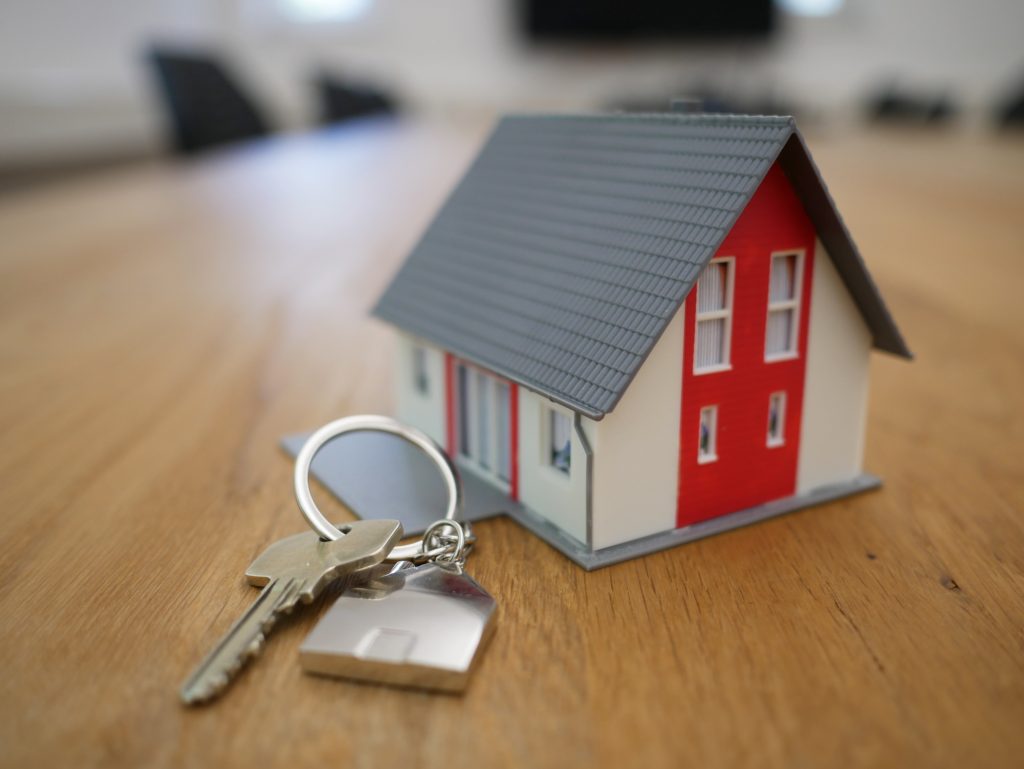
Lesson Seven: Buying a Home
Ah, that old chestnut! One of the many dreaded questions as a single, mid thirty-year-old I get constantly asked:
THEM: “Oh, so you own your home?”
I got sick of my solid “no” response so relinquished my answer to:
ME: “Yes, you wouldn’t believe I got an absolute steal on a Ponsonby villa, it’s a renovation, so you know I got it for $2.8M and after the $250K reno I’ll hoping flick it for a decent profit.”
At this point, there’s some uncommitted responses here, some fidgeting, eyebrow raising and looks of shock as he/she tries to do the math. This is then followed by:
“Wow sounds massive. Congratulations.”
I don’t leave it too long to process it before I drop the bomb;
ME: “Sigh/Giggle – Lady/Sir, the chances of me buying and renovating my own home in Auckland are about as high as is it for the tooth fairy to turn up on my door giving me my teeth back , or Santa stopping by for a whiskey to give me the backload of gifts that I actually asked for on those many lists.”
Note: I’m sure you can see I’m not overly enthused by the stigma around owning a home – however for the love of Gab Learns – I’m here for it. Episode 07 – Buying a Home
Question one – What should people be asking when wanting to buy an existing home?
Buying a home is an exciting, yet stressful process! I can guarantee every person (except me of course) has lost their ‘dream’ home at an auction or under sale, only now be living in their DREAM home. I applaud you for the many Saturday and Sundays spent at open homes and not lazily reading the paper with a cup of coffee. Organizing the viewings of open homes should only be handed to the most highly organized and time conscious one – that sh*t is like herding cats.
I digress… So as potential buyers here are some things to look out for, and questions worth asking the owner or estate agent.
- Use your senses – what do you smell/see? Are there smells of new paint, musky smells, or has fresh carpet been laid?
If you answered YES, then read on…
- New paint – this can often be used to cover up remnants of mould or condensation effects
- Musky/musty smells – it is likely that there has been, or that there currently is mould in the house – despite you not being able to see it
- New carpet – check around windows and door entrances, if there has been any condensation or moisture there could be an existing mould issues in these areas (and other areas of the house)
2. What questions should I be asking?
-
- Is this the original house?
- If not, when was it last upgraded/renovated/added to?
- Can I see the previous building reports/plans?
- What heating does the property have, and how long has this been installed?
- What kind of ventilation systems are used in the house?
- Is there insulation throughout the whole house? (underfloor, roof, walls)
Also look for:
- Cracks on outside of house – why are they there? can they be fixed?
- Open up walls if you can (use an inspector or Oculus rather than you going at it with a hammer) – once open, look for mould, rot or signs of moisture in the walls
TIP from one of our Podcast listeners: If you want to check if the property has wall insulation without ripping into the wall, unscrew the electrical receptacle and pop it off, you should then be able to see if there is insulation in the walls
Question two – If you have access to $10k-$20k where would this best be spent? And what places are going to be easy to improve?
(Scenario: Four-bedroom weatherboard home, single glazed windows, aluminum joinery, floor/ceiling insulation, no ventilation systems in any bathrooms which are all near bedrooms).
- Ventilation – first things first, install ventilation in the bathroom. We simply cannot rely on just opening and closing the windows to ventilate the bathroom, or the rest of the house for that matter (plus if it’s a cold blistery day, who wants to welcome that in)?! Leaving the ventilation system/fan on a lot of the time – not only when you are showering – is going to solve a lot of problems. The system won’t just focus on the bathroom, but it will also help ventilate throughout the house.
- Heating – this home scenario has single glazed windows with aluminum joinery, which typically means there will be a considerable amount of condensation as the warm air inside hits the cold surfaces of the windows/joinery. So, we want to remove that moisture with ventilation and adding a heater increases the drying potential in the air, which keeps the air healthy and reduces condensation.
- Windows – if you want to update your windows to double glazed, thermally broken windows, the home does need to be properly insulated. Floor, ceiling and If the insides of the walls are uninsulated there will be a lot of energy loss, and subsequently your home won’t be able to maintain a consistent (cosy) air temperature. If this is the case, you can opt to blow fluffy insulation directly into the walls by cutting a small frame out to access the frames behind the wall. If you were considering updating to double glazed, thermally broken windows, but are hindered by the cost to cover the whole house, instead isolate areas that are most used (ie lounge or bedrooms), or where there are gigantic windows bleeding energy. Double glazing in isolated areas will help reduce the risk of mould there and other allergens which is particularly important for anyone who suffers with allergies or asthma.
- Insulation – Adding external insulation is a great option. This system is placed on top of the existing homes weatherboards, a membrane to make an air barrier is then installed on the outside of weatherboards. Insulation essentially wraps around the whole building and then new weatherboards (or other cladding) gets installed on top of the insulation layer. This option is a much smaller renovation, and as it is exterior it means the owners can still live in the house while the works are being completed.
NOTE: If you are interested in reading another article about banks’ lending interest free loans for home improvement and are wondering how this money might be best spent – check out this article written HERE written by Robyn Ryan, Intermediate Building Encloser Engineer, Oculus.
Question Three – Is it better to buy an existing home and retrofit, or design your own home from scratch?
Again, it comes down to what you are buying, and budget
If the house has great bones, you like what it looks like, and maybe only needs to improve some factors to maintain adequate performance such as heating, ventilation and insulation – then definitely keep the bones and concentrate on increasing or enhancing the building performance so you can live in a warm, dry and comfortable home.
On the older side, if the house has no aesthetical appeal and you have money to tear it down, go for it! [Cue Miley Cyrus with her wrecking ball]. Little upgrades aren’t as much of a process in terms of consents, however this option (bowling and starting from scratch) does come with more consenting processes and consultations with various project leads.
The last option is that you found a house you like; however, it is unredeemable from a building performance perspective, in which case it might be better to take it all down and start again. The amount of works required, and resource spent in getting the house to a base level of a healthy home would be a heavily weighted option if restoration was the only option wanting to be taken.
Question Four – how do I know if I am going to fall prey to tricks of previous owners desperate to sell?
Yes. Sneaky isn’t it. I’m sure no one you have bought a house off has done any of these things (or you to anyone), but knowledge is power so here’s a few things to look out for:
- Replacement carpet or carpet strips by windows – as mentioned above this is a telltale sign that condensation and/or mould has been present here. You will want to check that this (the condensation and mould) has been properly removed and fixed at the source and that there is a solution to the problem, not just a quick fix. Remember mould is microscopic so even when it has been cleaned from surfaces, it doesn’t mean it is all removed/eradicated.
- New paint on internal walls, this could be all walls, or single walls/areas – when there is moisture, water leakage or mould this can create stains on the walls, or bubbliness. A quick fix for this is to scrap down the wall, removing and bubbliness or visible mould, and repaint! Voila! But not ideal if you are looking to buy….
- Check junctions and doorways – look at all junctions of windows and floors, checking for gaps, cracks and any sign of damage from condensation
- Browned or stained insulation – this is a sign the insulation is not happy, team. Chances are there has been moisture issues, and potentially mould growth depending on the varying temperatures that are exposed to this space. Out with the old, in with the new.
- New paint on exterior walls – this can be used as a cover for any cracks – of which you would want to know about. If any of these cracks need work, or if there is structural damage you will need a full insight and reports (if available) before you sign that dotted line! Also check behind any large pot plants near the house – these can be used as a good way to conceal any imperfections such as cracks and gaps as well.
Well there you have it! Buying a home – what to ask, what to look for, and what you need to consider. Ultimately, we want all homes in New Zealand to be warm, safe and dry for its occupants.
And on that note, I’m off to speak to an agent – I may have been convinced to scale down on the $2.8M Ponsonby villa (great advice bank account).




